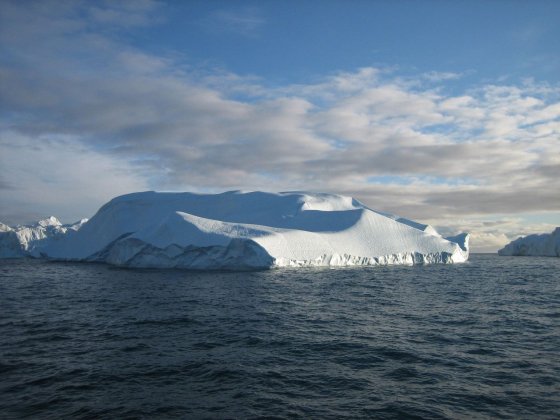Publication in the Proceedings of the National Academy of Sciences of the United States of America on March 14 2023.
Nina Davtian & Edouard Bard
Chair Climate and Ocean Evolution, Collège de France
CEREGE (UMR Aix-Marseille Université, CNRS, IRD, INRAE, Collège de France) Aix-en-Provence

The Atlantic Meridional Overturning Circulation (AMOC ) is likely to be affected by current climate change. A weakening of the AMOC could contribute to the regional cooling observed at the surface of the North Atlantic, a feature of numerical data and simulations that has been interpreted as one of the complex oceanic responses to increasingCO2 in the atmosphere. This notable feature is highlighted in the very first figure of the IPCC AR5 Summary for Policymakers and in figure 5 of the latest IPCC AR6 Summary.
The consequences of these AMOC changes will be global, through what is known as " the bipolar seesaw ". Projections based on numerical models show that AMOC weakening will continue to accompany global warming due to future anthropogenicCO2 emissions. Nevertheless, the existence and magnitude of the long-term trend in recent observations remains a matter of debate due to the high variability of AMOC in the short term. Moreover, the future evolution of AMOC and its dependence on the overall amplitude and speed of future anthropogenic forcing scenarios are still highly uncertain.
The other way to study AMOC fluctuations is to look to the recent geological past. The last glacial cycle is undoubtedly the best period, as it includes a series of AMOC fluctuations of different durations involving drastic slowdowns or even stoppages of AMOC. Decades of research have demonstrated that temperature records in Greenland and the North Atlantic exhibit abrupt variability, known as " Dansgaard-Oeschger events ", which accompany AMOC fluctuations. These events also have warm counterparts in the Southern Hemisphere via the thermal bipolar seesaw, a concept describing meridional heat transport leading to asynchronous temperature changes between the two hemispheres.
However, Greenland's air temperature records do not show extreme cooling during the Heinrich stages, corresponding to the massive iceberg discharges into the North Atlantic (see photo) that most affected the AMOC. In contrast, surface water temperature records in the North Atlantic clearly illustrate increased cooling during Heinrich stages. Modeling studies suggest that Greenland may have been isolated from further cooling during the Heinrich stages by a southward shift in the North Atlantic deep-water formation zones (departure of the deep branch of the AMOC) and the presence of pack ice surrounding Greenland. We can also point to the additional effects of seasonality on the 18O/16Oice ratio used as a temperature indicator for Greenland.
This " truncation " of the Greenland record during the most pronounced cooling events is the main reason why Heinrich stages have not been discovered in ice cores, but in North Atlantic sediments, notably those of the Iberian margin for the most recent Heinrich stage. However, due to its high temporal resolution, the Greenland temperature record has always been used as a basis for studying the bipolar seesaw, examining statistical relationships with Southern Hemisphere records, as well as using the Greenland record as an input signal for models simulating the thermal bipolar seesaw. This truncated Greenland record inevitably gives the impression that the bipolar seesaw is limited to an oscillation between two stable climatic states.
The new study published in PNAS revisits this fundamental problem by providing new high-resolution ocean temperature records for the southern Iberian margin (arguably the best site to do so in the North Atlantic), as well as introducing a new mode of analysis and a new bipolar seesaw index to distinguish Dansgaard-Oeschger cooling with or without a Heinrich event. This study shows that the bipolar seesaw model generates synthetic Southern Hemisphere temperature records that most closely resemble Antarctic temperature records when the new Iberian margin temperature records are used as model inputs.
The new comparison of simulations with data emphasizes the role of the bipolar seesaw in the abrupt temperature variability of both hemispheres, with a clear amplification during Dansgaard-Oeschger cooling accompanied by Heinrich events. This implies a more complicated relationship than a simple switch between two climatic states due to a critical threshold phenomenon. The new analysis clearly shows the importance of North Atlantic conditions in defining the response of the Southern Ocean. This suggests more complex dynamics than previously thought, with direct implications for our understanding of past and future climate change associated with AMOC and the bipolar seesaw.
This work was carried out as part of Nina Davtian's postdoctoral contract at CEREGE in Aix-en-Provence, funded by the Collège de France for the Climate and Ocean Evolution chair.








